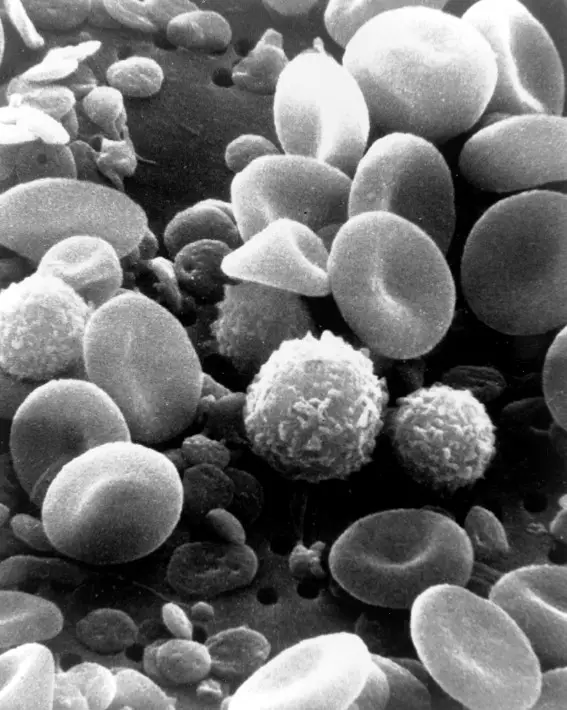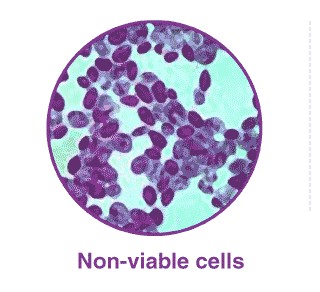Cell counting is a fundamental process used across a wide array of scientific disciplines, from biomedical research to industrial biotechnology. It serves as a cornerstone for understanding cellular dynamics, assessing health, and monitoring the effects of treatments or conditions on cell populations. The precision in distinguishing between the total number of cells and those that are viable—alive and capable of growth—can significantly influence the interpretation of experimental outcomes and the direction of further research.
The difference between total cell count and viable cell count lies in what each measurement represents. Total cell count includes all cells present in a sample, regardless of their state—alive, dead, or dormant. In contrast, viable cell count specifically measures the subset of cells that are alive and capable of growth. This distinction is crucial for accurate data interpretation in both research and industrial applications, enabling more informed decisions based on the physiological state of the cell population.
Understanding the discrepancy between these two counts is essential for interpreting experiments accurately, optimizing production processes in biotechnology, and ensuring the efficacy of pharmaceuticals. Techniques and tools for measuring these counts have evolved, offering insights into the health and condition of cell cultures that are vital for progressing scientific understanding and industrial efficiency.

Basics of Cell Counting
Definition and Purpose
Cell counting is a fundamental technique used across various scientific disciplines, from research and medicine to industrial applications like fermentation and bioreactor design. At its core, cell counting measures the number of cells in a sample, providing critical data on cell density, growth rates, and the effectiveness of treatments or conditions on cellular populations. This data is pivotal for researchers and professionals working in fields such as microbiology, immunology, oncology, and biotechnology, among others.
The primary purpose of cell counting is to assess the health and viability of cell cultures, monitor biological processes, and evaluate the effects of drugs and treatments. It supports the quantification of cell proliferation, determination of cytotoxicity, and the assessment of genetic expression, making it indispensable in both laboratory research and industrial processes.
Tools and Techniques
The techniques for cell counting range from manual methods to sophisticated automated systems. Each approach has its benefits and limitations, often selected based on accuracy requirements, sample type, and available resources.
Manual Counting with Hemocytometers
- Hemocytometers are traditional devices that require a microscope. A technician manually counts cells in a gridded area. This method, while time-consuming, is cost-effective for smaller labs.
Automated Cell Counters
- Automated cell counters use electrical or optical sensing to count cells. They offer faster results with less effort and can provide additional information about cell size and morphology.
Flow Cytometry
- Flow cytometry can distinguish between different cell types and states, including live, dead, and different cell cycle phases. It’s highly accurate but requires sophisticated equipment and expertise.
Image-based Counting
- Image-based systems use cameras and image analysis software to count cells in a sample automatically. They can also differentiate between viable and non-viable cells with specific staining techniques.
Staining Techniques play a crucial role in distinguishing viable cells from non-viable ones. Dyes like Trypan Blue exclude viable cells, staining only the dead ones, while fluorescent stains can indicate various aspects of cell health and function.
Total Cell Count
What It Measures
The total cell count measures every cell present in a sample, irrespective of its viability. This count includes living cells, dead cells, and those in a dormant state. The total cell count is essential for understanding the overall cell density in a culture or sample, providing a comprehensive overview of the population.
Methods Used
Hemocytometer Use
- The most traditional method, involving manual counting under a microscope. It’s reliable but requires significant time and expertise.
Automated Counters
- Utilize either electrical impedance or optical methods to count cells quickly. These devices can process a large number of samples with minimal user intervention.
Applications
Total cell counts are crucial in various fields:
- Microbiology for assessing the density of bacterial cultures.
- Oncology research, where cell proliferation rates are a key interest.
- Bioprocessing and biomanufacturing, where knowing the total cell mass is vital for optimizing yields.
Viable Cell Count
Definition of Viability
A viable cell is not just alive but also capable of growth and division. Viability is a crucial measure in any process or experiment that depends on functional living cells. It’s especially important when assessing the effects of drugs, environmental conditions, or genetic modifications on cells.
Techniques for Determination
Staining Methods
- Techniques using dyes like Trypan Blue or propidium iodide to distinguish live cells from dead ones based on membrane integrity.
Culture-based Assays
- Assess the ability of cells to grow and form colonies, directly measuring their viability and proliferative capacity.
Fluorescence-based Assays
- Use fluorescent dyes that respond to aspects of cellular metabolism or membrane integrity, providing insights into cell health and viability.
Importance in Research
Viable cell counts are crucial for:
- Drug development, where the efficacy of a treatment is often measured by its ability to kill cancer cells without affecting healthy cells.
- Microbiology, to determine the growth rate of bacteria or yeast in various conditions.
- Biotechnology applications, such as tissue engineering and stem cell research, where only the cells capable of division and differentiation are of interest.

Comparison of Total and Viable Counts
Key Differences
Total and viable cell counts serve distinct purposes in scientific research and industrial applications. Total cell count encompasses every cell within a sample, including both live and dead cells, providing a comprehensive overview of the cell population. In contrast, viable cell count focuses solely on live cells capable of growth and division, offering insights into the health and potential of a cell population.
Understanding the difference is crucial:
- Total cell count is about quantity, assessing the overall size of a cell population.
- Viable cell count measures quality, evaluating the health and functionality of cells.
Both counts are necessary to fully understand a cell population’s status, enabling precise analysis and decision-making in research and production environments.
Interpretation of Results
The interpretation of total and viable cell counts can reveal much about a cell population’s condition and its environment:
- A high total cell count with a low viable cell count suggests high mortality or suboptimal conditions for cell growth.
- Conversely, similar total and viable cell counts indicate a healthy, thriving cell population.
These insights guide adjustments in research protocols, production methods, and treatment plans, ensuring the success of scientific and industrial endeavors.
Practical Implications
In Clinical Settings
In healthcare, both total and viable cell counts are invaluable:
- Diagnosing diseases: Certain conditions, like leukemia, are characterized by abnormal increases in certain cell types.
- Monitoring treatments: The effectiveness of chemotherapy, for instance, can be assessed by observing changes in viable cell counts.
These counts not only help in diagnosing and treating diseases but also in understanding the pathogenesis of conditions, allowing for more personalized and effective care.
In Industrial Applications
In industries like biotechnology and pharmaceuticals, these counts influence:
- Bioprocessing: Optimizing conditions for microbial or cell culture growth in vaccine production or fermentation processes relies on monitoring viable cell counts.
- Quality control: Ensuring the efficacy and safety of biological products requires rigorous cell count analysis.
Understanding cell populations helps in scaling up production processes, maintaining product consistency, and meeting regulatory standards.
Challenges and Limitations
Accuracy and Precision
Despite technological advancements, challenges in ensuring accuracy and precision in cell counting persist:
- Manual counting is subject to human error and inconsistency.
- Automated systems may struggle with complex samples or distinguishing between closely related cell types.
These limitations can affect research outcomes, product quality, and patient care, highlighting the need for continued innovation and stringent validation of counting methods.
Advances in Technology
Technological advancements are continually addressing these challenges:
- Enhanced imaging and software algorithms improve the accuracy of automated cell counters.
- Developments in flow cytometry allow for more detailed cell analysis.
- Emerging technologies, like AI and machine learning, are being applied to predict and optimize cell growth conditions, further refining cell counting practices.
These advancements promise to overcome current limitations, offering more reliable, efficient, and comprehensive analysis tools for scientists and industry professionals.

Frequently Asked Questions
What is cell viability?
Cell viability refers to the ability of a cell to survive, grow, and fulfill its function. It is often assessed through various methods to determine the health of a cell population, especially after treatments with drugs or under different environmental conditions.
Why is total cell count important?
Total cell count provides a comprehensive overview of all cells within a sample, including live, dead, and dormant cells. It’s crucial for understanding the overall density and composition of a cell population, which is essential in research and industrial processes where cell quantity matters.
How do you measure viable cell count?
Viable cell count is typically measured using staining methods that differentiate live from dead cells, culture-based assays that assess the ability of cells to proliferate, or through advanced imaging techniques that can directly visualize cell health and activity.
What impacts cell viability?
Cell viability can be affected by a myriad of factors including environmental conditions, nutrient availability, presence of toxins or drugs, and physical stress. Understanding these factors is crucial for managing cell health in research and industrial applications.
Conclusion
The distinction between total cell count and viable cell count is more than a technicality; it’s a critical factor in the accurate assessment of cell populations across various scientific and industrial fields. Recognizing the difference allows researchers and practitioners to draw more accurate conclusions, make informed decisions, and further our understanding of cellular behaviors and treatments.
As technology advances, the precision and ease of measuring these counts continue to improve, offering deeper insights and more reliable data for studies and processes. Embracing these advancements enhances the ability to navigate the complexities of cell biology, ensuring the continued progress of scientific discovery and industrial innovation.

